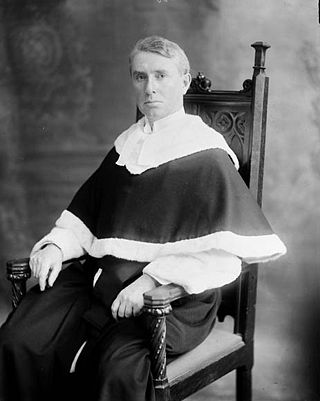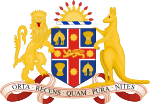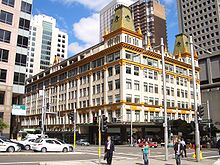The courts of England and Wales, supported administratively by His Majesty's Courts and Tribunals Service, are the civil and criminal courts responsible for the administration of justice in England and Wales.

A justice of the peace is a judicial officer of a lower or puisne court, elected or appointed by means of a commission to keep the peace. In past centuries the term commissioner of the peace was often used with the same meaning. Depending on the jurisdiction, such justices dispense summary justice or merely deal with local administrative applications in common law jurisdictions. Justices of the peace are appointed or elected from the citizens of the jurisdiction in which they serve, and are usually not required to have any formal legal education in order to qualify for the office. Some jurisdictions have varying forms of training for JPs.

The term magistrate is used in a variety of systems of governments and laws to refer to a civilian officer who administers the law. In ancient Rome, a magistratus was one of the highest ranking government officers, and possessed both judicial and executive powers. In other parts of the world, such as China, a magistrate was responsible for administration over a particular geographic area. Today, in some jurisdictions, a magistrate is a judicial officer who hears cases in a lower court, and typically deals with more minor or preliminary matters. In other jurisdictions, magistrates are typically trained volunteers appointed to deal with criminal and civil matters in their local areas.

The courts of quarter sessions or quarter sessions were local courts that were traditionally held at four set times each year in the Kingdom of England from 1388; they were extended to Wales following the Laws in Wales Act 1535. These courts also became established in Scotland, Ireland and in various other dominions of the British Empire.
Breach of the peace or disturbing the peace, is a legal term used in constitutional law in English-speaking countries and in a public order sense in the several jurisdictions of the United Kingdom. It is a form of disorderly conduct.

District courts are a category of courts which exists in several nations, some call them "small case court" usually as the lowest level of the hierarchy. These include:

The Supreme Court of New South Wales is the highest state court of the Australian State of New South Wales. It has unlimited jurisdiction within the state in civil matters, and hears the most serious criminal matters. Whilst the Supreme Court is the highest New South Wales court in the Australian court hierarchy, an appeal by special leave can be made to the High Court of Australia.

The Local Court of New South Wales is the lowest court in the judicial hierarchy of the Australian state of New South Wales. Formerly known as the Court of Petty Sessions and the Magistrates Court, there are more than 160 branches across New South Wales where the Local Court has jurisdiction to deal with the majority of minor civil and criminal matters.

In England and Wales, a magistrates' court is a lower court which hears matters relating to summary offences and some triable either-way matters. Some civil law issues are also decided here, notably family proceedings. In 2010, there were 320 magistrates' courts in England and Wales; by 2020, a decade later, 164 of those had closed. The jurisdiction of magistrates' courts and rules governing them are set out in the Magistrates' Courts Act 1980.

The Supreme Court of Norfolk Island is the superior court for the Australian territory of Norfolk Island. It has unlimited jurisdiction within the territory in civil matters and hears the most serious criminal matters. It also has jurisdiction over the Coral Sea Islands Territory. All matters are heard before a single judge, including appeals from the Court of Petty Sessions. In the Australian court hierarchy, it is one of eight state and territory Supreme Courts having unlimited jurisdiction in their respective parts of Australia. Appeal lies to the Federal Court of Australia, from which an appeal by special leave can be made to the High Court of Australia.

The Magistrates Court of South Australia is the lowest level court in the state of South Australia. The Magistrates Court, then known as the Court of Petty Sessions, was established in 1837, by the Court of Sessions Act 1837. It has both original and appellate jurisdiction and hears matters specified in the Magistrates Court Act 1991 (SA).
The District Court is the main court of summary jurisdiction in Ireland. It has responsibility for hearing minor criminal matters, small civil claims, liquor licensing, and certain family law applications. It is also responsible for indicting the accused and sending them forward for trial at the Circuit Court and Central Criminal Court.

The Land and Environment Court of New South Wales is a court within the Australian court hierarchy established pursuant to the Land and Environment Court Act 1979 (NSW) to hear environmental, development, building and planning disputes. The Court’s jurisdiction, confined to the state of New South Wales, Australia, includes merits review, judicial review, civil enforcement, criminal prosecution, criminal appeals and civil claims about planning, environmental, land, mining and other legislation.
The Victims Compensation Tribunal of New South Wales is a former tribunal of the Government of New South Wales that was established to determine the amounts that may be awarded to victims of crime for personal injury in New South Wales, a state of Australia. The tribunal had exclusive jurisdiction to determine the amount which the Victims Compensation Fund of New South Wales would pay to a victim of crime. This tribunal was unique in Australia in that it did not notify nominated defendants of tribunal hearings and therefore did not hear evidence that may exist from such persons.

The Children's Court of New South Wales is a court within the Australian court hierarchy established in 1905. The current iteration was established on 18 January 1988 pursuant to the Children's Court Act 1987 (NSW) which deals with criminal offences committed by children aged over 10 years and under 18 years, as well as with proceedings relating to the care and protection of children. The court is located in the Parramatta Justice Precinct.

The New South Wales Court of Appeal, part of the Supreme Court of New South Wales, is the highest court for civil matters and has appellate jurisdiction in the Australian state of New South Wales.

The Magistrates Court of the Australian Capital Territory is a court of summary jurisdiction that deals with the majority of criminal law matters and the majority of small civil law matters in the Australian Capital Territory, the Jervis Bay Territory and the Australian Antarctic Territory.

The Chief Industrial Magistrate's Court of New South Wales, a division of the Local Court of New South Wales, is a court within the Australian court hierarchy established pursuant to the Industrial Relations Act 1996 (NSW).

The courts of South Africa are the civil and criminal courts responsible for the administration of justice in South Africa. They apply the law of South Africa and are established under the Constitution of South Africa or under Acts of the Parliament of South Africa.

The Supreme Court of New South Wales for the District of Port Phillip was an historical division of the Supreme Court of New South Wales, exercising the jurisdiction of that court within the Port Phillip District of New South Wales. It consisted of a single Resident Judge. It existed from 1840 until 1852, when, following the separation of the Port Phillip District to form the Colony of Victoria, it was replaced by the Supreme Court of Victoria.













